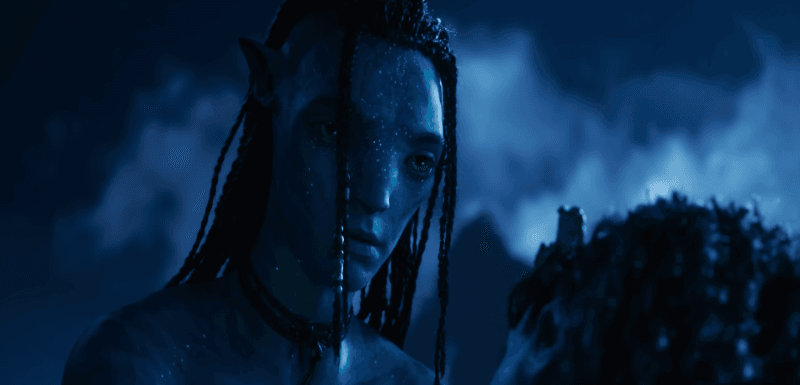
Blender for Architectural Visualization: Comprehensive Guide
Top News
Blender
When planning houses or buildings, a person must create clear pictures of what the final place will look like. Many times, it becomes hard to imagine spaces just with drawings or paper plans. This is where digital models help a lot, as they give designers and builders a better idea of the full view. Hence, people look for tools that are free and powerful to use for design work.For this purpose, Bl

From Modeling to Presentation: Mastering Architectural Animation
Top News
Architectural Visualization
Architectural animation is an efficient technique that can turn building plans into interactive previews. Instead of just looking at flat drawings, you can show how a building will look and feel in motion. This technique is widely used in real estate and construction to showcase projects in an engaging way. It makes it easier to spot problems, share ideas, and get everyone on the same page before

Explore Architectural Rendering: From Basics to Advanced Techniques
Top News
Architectural Visualization
The ability to bring the concepts in your mind to real life requires more than simple drawings. When you visualize an idea, it lets the stakeholders see the full potential of the project. That’s where architectural rendering plays a crucial role, changing raw concepts into stunning images. Not only does that make it easier to elaborate on what you think in an effective way, but it also leave

Interview with Cheng Lei, Telling a Dream about Travel in Architectural Visualization
Fox Renderfarm Interview
CGarchitect Architectural 3Dawards
Exclusive interview about 2019 ARCHITECTURAL 3D AWARDSThe CGarchitect Architectural 3D Awards, sponsored by Fox Renderfarm, is the largest and most prestigious awards event for the architectural visualization industry, attracting entries from top studios, freelancers and students from around the world.Fox Renderfarm is honored to introduce the winner of the Film/Animation(Student) category, Mr.Ch

Interview with Adrian Rubio Vasco: ArchViz Works that Fool Your Eyes
Fox Renderfarm Interview
3D Art Competitions
Exclusive interview about 2019 ARCHITECTURAL 3D AWARDSIt is always said that “seeing is believing”, while sometimes you will somehow be confused or fooled by your eyes. Spanish ArchViz artist Adrian Rubio Vasco takes us in front of and inside The Longbranch Cabin made by Olson Kundig with his extraordinary ArchViz artworks. Each photorealistic ArchViz illustration features perfect pers

Interview with Jesús Gómez San Emeterio, Interactive Design in UE Empowers ArchViz with More Possibility
Trending
Architectural Visualization
Exclusive interview about 2019 ARCHITECTURAL 3D AWARDSHey, friends! Thank you so much for keeping up with our CGarchitect 2019 Awards interview! After seeing a number of the well-made artworks, from images to short films, students to professional ArchViz creators, and personal works to company projects, Fox Renderfarm, the industry's leading cloud rendering service provider and render farm, was ex

Interview with Alvaro Arroyo, Creating a Melancholic Atmosphere in ArchViz
Fox Renderfarm Interview
3D Art Competitions
Exclusive interview about 2019 ARCHITECTURAL 3D AWARDSAfter reading 2 interviews with the winner and nominee for the 2019 Architectural 3D Awards, you must have been amazed by their great ideas and persistence in their ArchViz career. Today, we go on our exploration in the creation of ArchViz by talking to Mr. Alvaro Arroyo, nominee for Student Image category.Alvaro ArroyoFrom: Spain3D ArtistSchoo

Interview with Patrick Vogel, a Designer Thinking about How Futuristic Architecture to Save the Last Nature
Fox Renderfarm Interview
Architectural Visualization
Exclusive interview about 2019 ARCHITECTURAL 3D AWARDSWhat happens, if the ecosystem is going to collapse? How will architecture save the last few bits of nature? Patrick Vogel, a multidimensional designer and creative director, told us his answer through a futuristic 3D architectural work.Patrick VogelFrom: GermanyMultidimensional DesignerCompany: ALT/SHIFTThe Prophecy: Nominated work in Image (N

Shifting the Boundary of Physical and Virtual Worlds in 3D Art: Introducing Designer & Director, LIU Xin(1)
Fox Renderfarm Interview
CGarchitect Architectural 3Dawards
LIU XinDesigner/DirectorLIU Xin is a Designer and Director who works between architecture and time-based media. His practice centers around the influence of digital and physical on shifting the boundaries of the design of spaces and objects.He is currently freelancing. And in the beginning of March, 2021, he received admission to Harvard Graduate School of Design’s Master in Design Studies degree

Interview with Massimiliano Napoli, COO of Diorama: Diorama’s Aesthetic and Their Secrets behind the Post-pandemic Success
Fox Renderfarm Interview
Architectural Visualization
Massimiliano NapoliCOO & Head of Still Images Department DioramaPosters of Diorama’s Award-winning ShortsAnother good news I can’t wait to share with our audience is that Diorama is looking for teammates who can join them in a universe where everything is possible. If you are also touched by their amazing projects and share the same pursuit of excellence, don’t hesitate to check th

How Rao Jinyu, SCI-Arc Graduate Integrates Children's Psychology with Architecture to Create Her Unique ArchViz Project in C4D
Trending
Architectural Visualization
Rao JinyuArchitectFrom: ChinaMaster of Architecture II, SCI-ArcBachelor of Architecture, Shanghai UniversityUnlike the conventional architecture we generally see which is solid and cold, the architectural artworks by Rao are of bright colors and soft materials. You will always find some surprising objects in her projects, such as stuffed toys, inflating balloons, or scattering flower petals. From

How to Build the Garden of Damocles in 3ds Max
Fox Renderfarm Interview
CGarchitect Architectural 3Dawards
Csaba BanatiFreelance IllustratorFrom: AustriaFox Renderfarm: Hi Csaba, could you give us a brief introduction about yourself?Csaba: Hi all, I'm Csaba Banati - working as a freelance illustrator currently from the city of Vienna, Austria.I've been working in the industry for about 8-9 years now. Originally I have a degree in architecture but never worked as an architect. Instead I focused on archi











